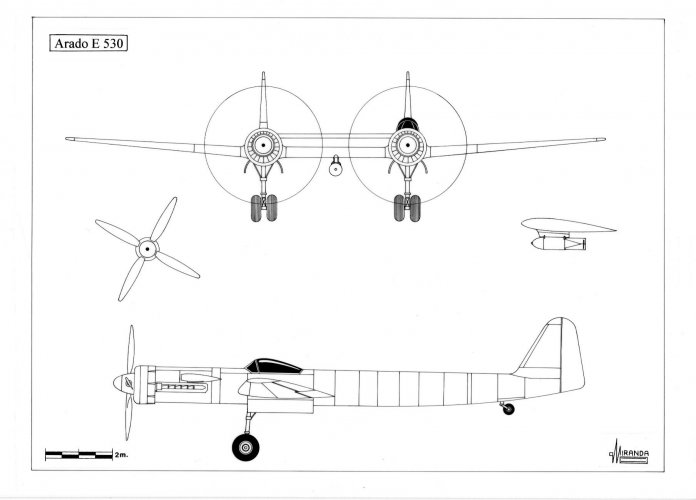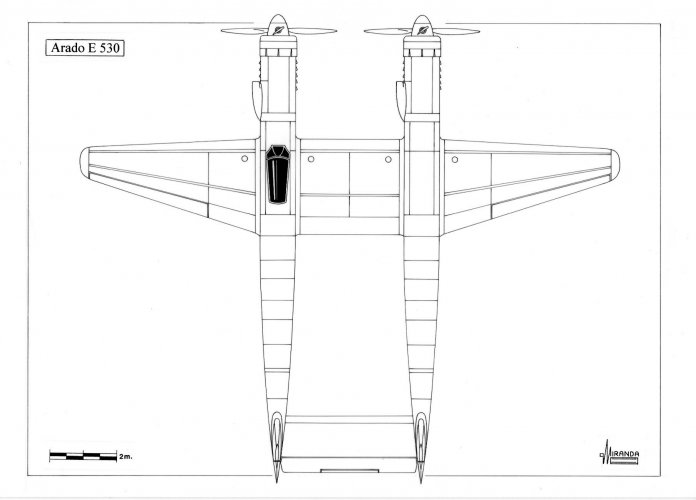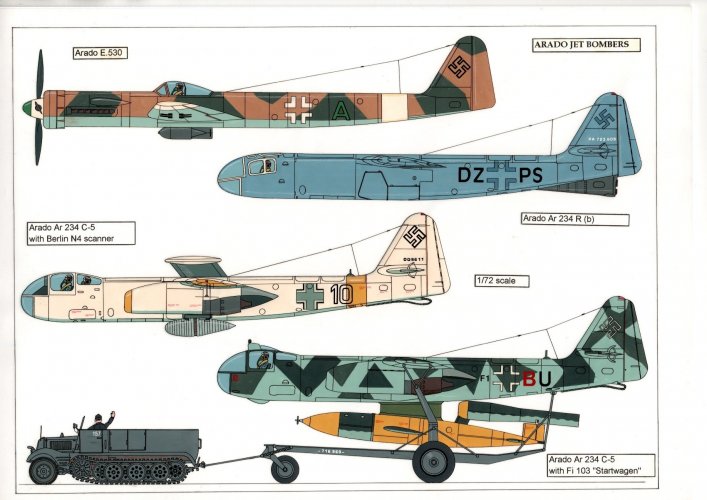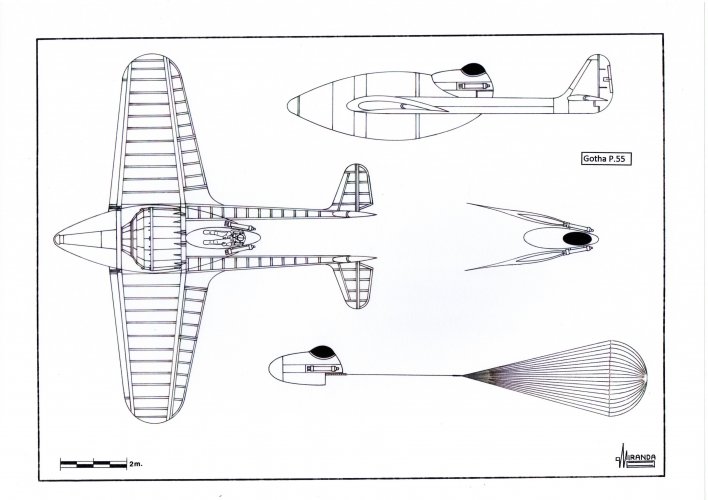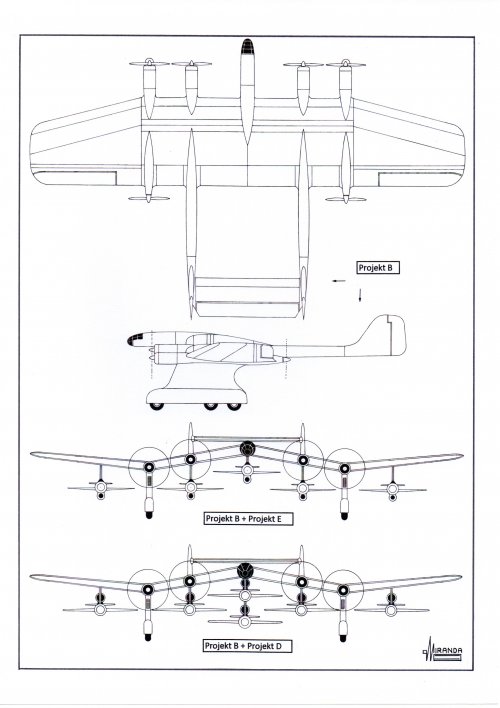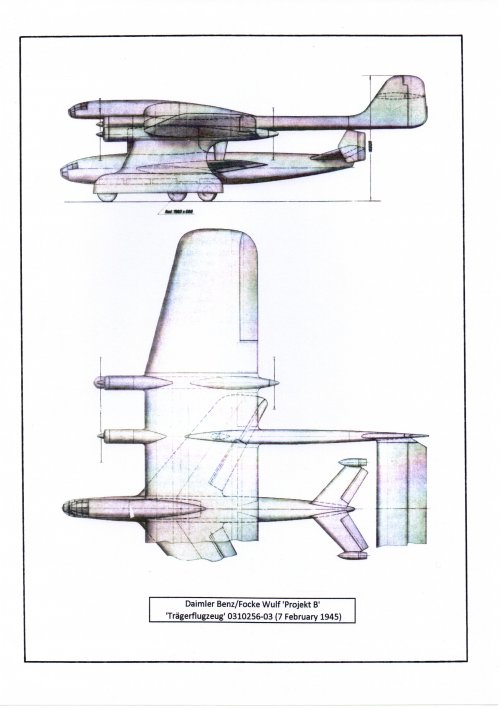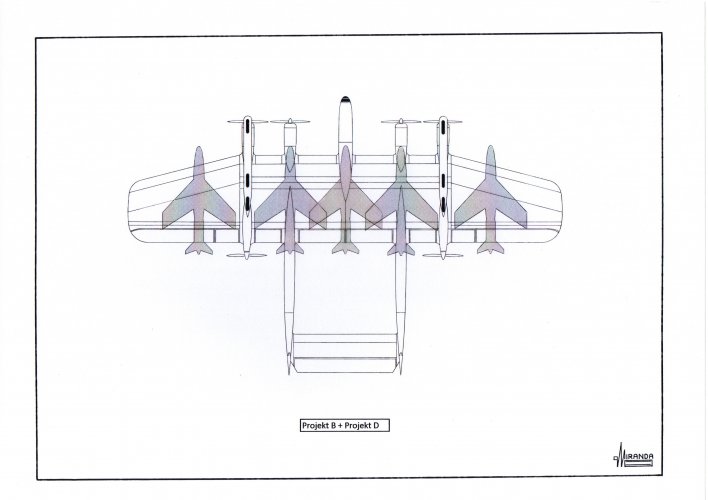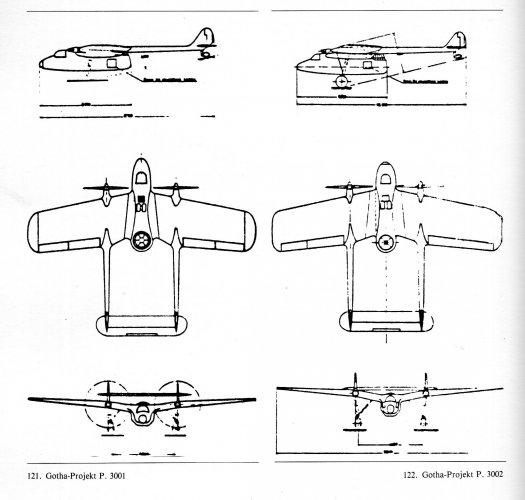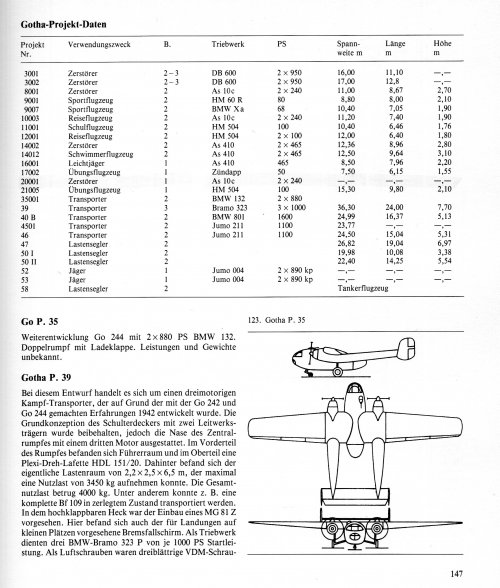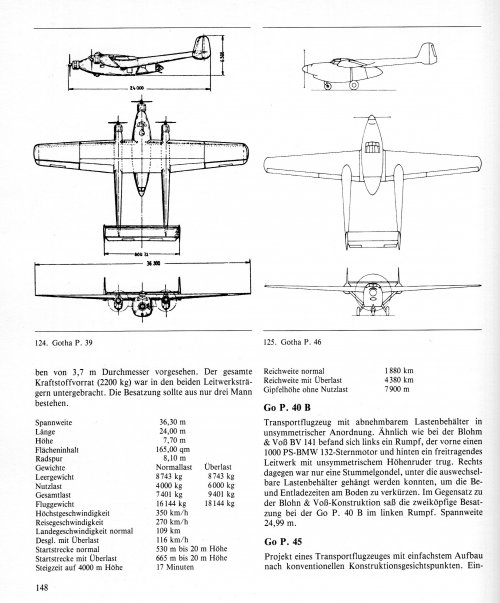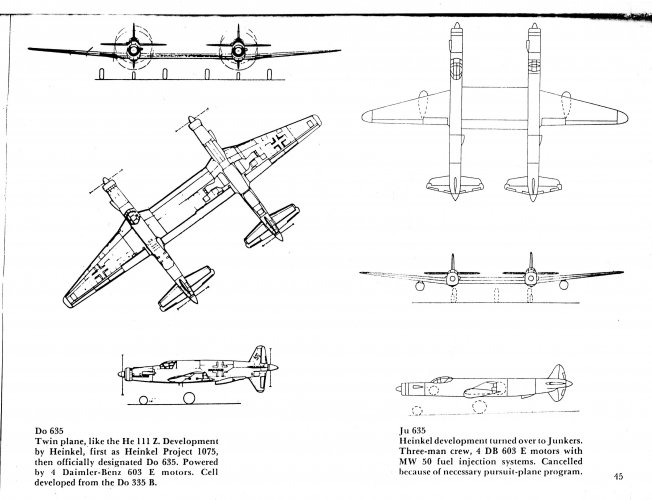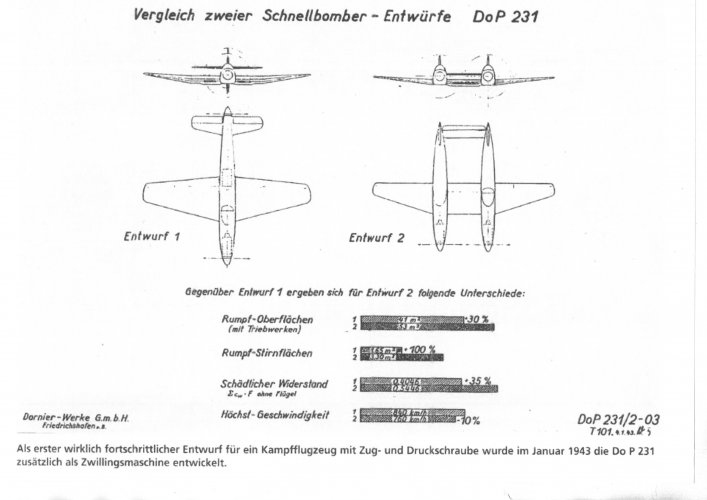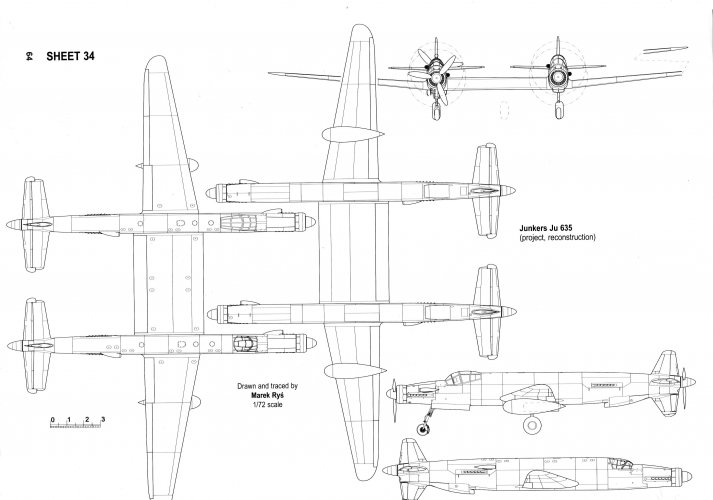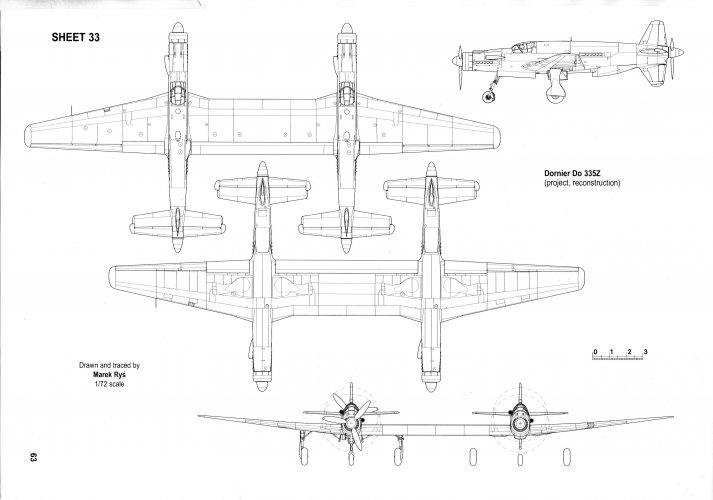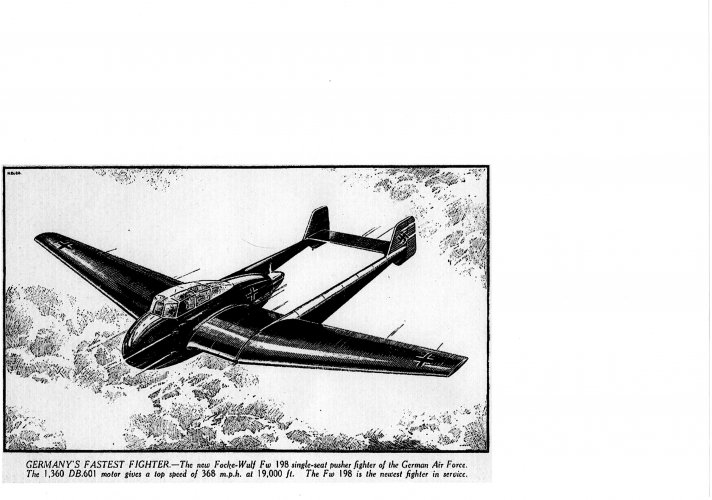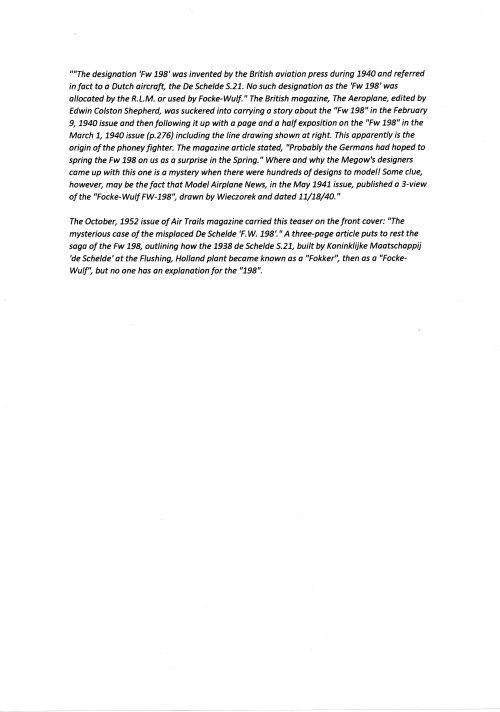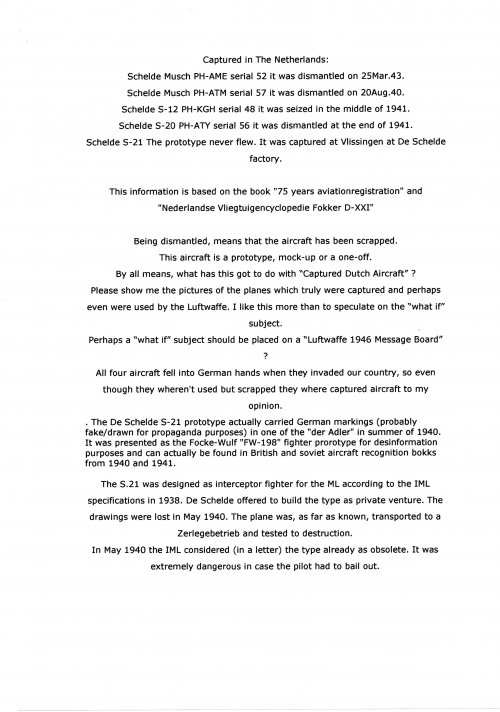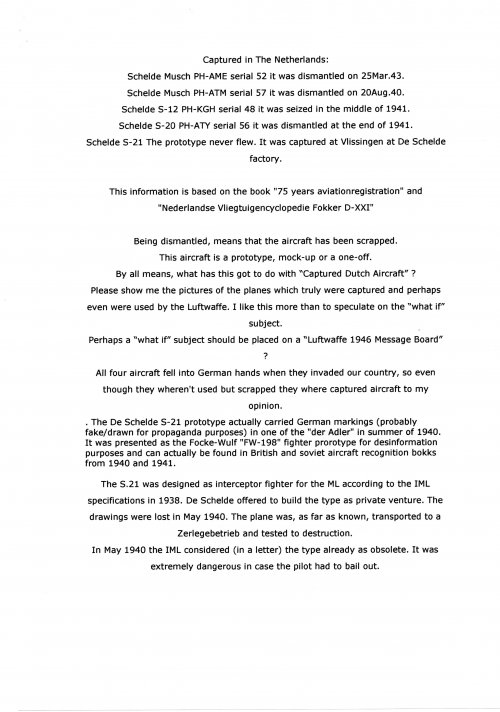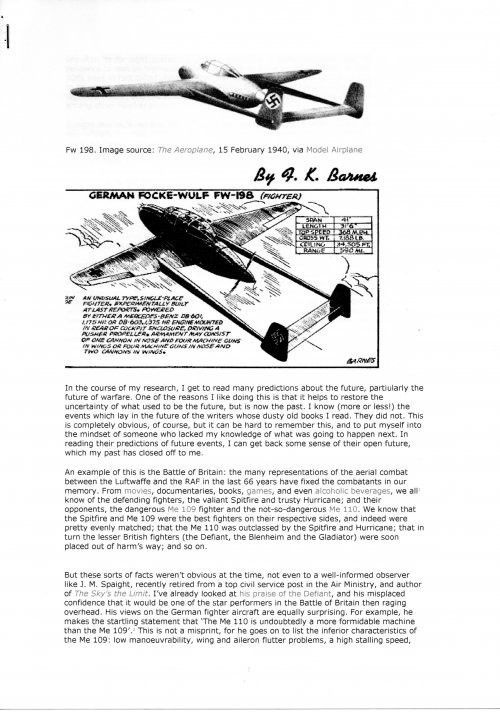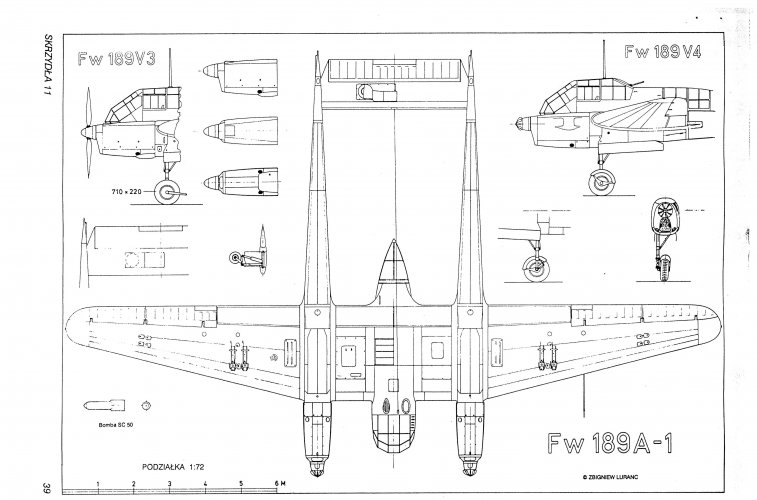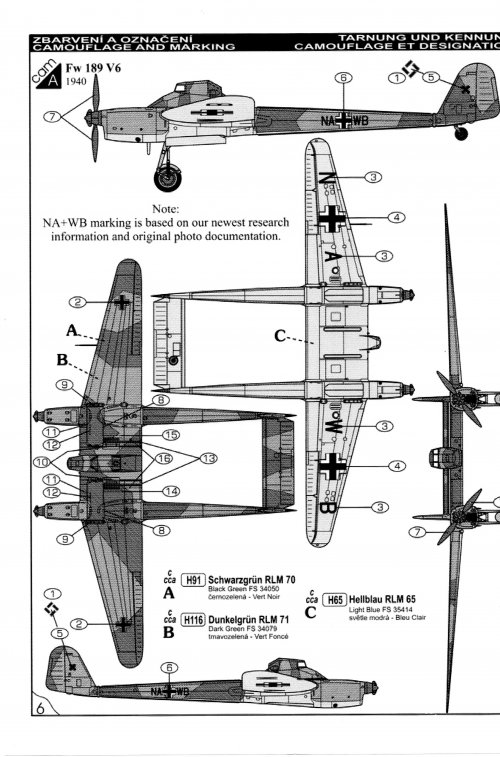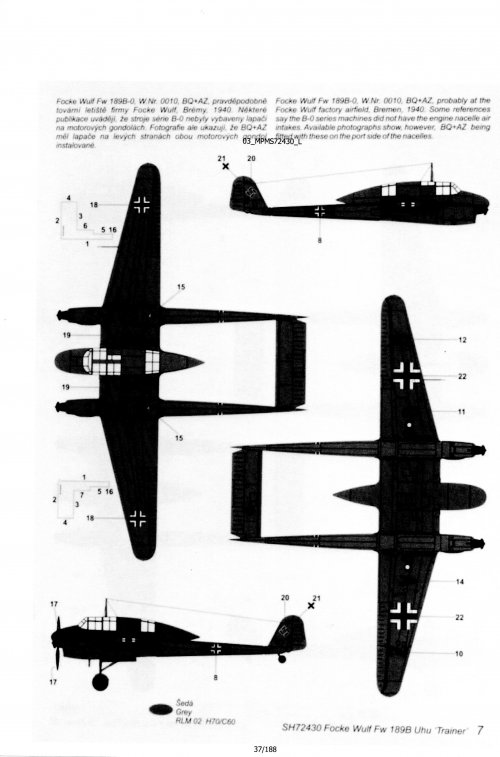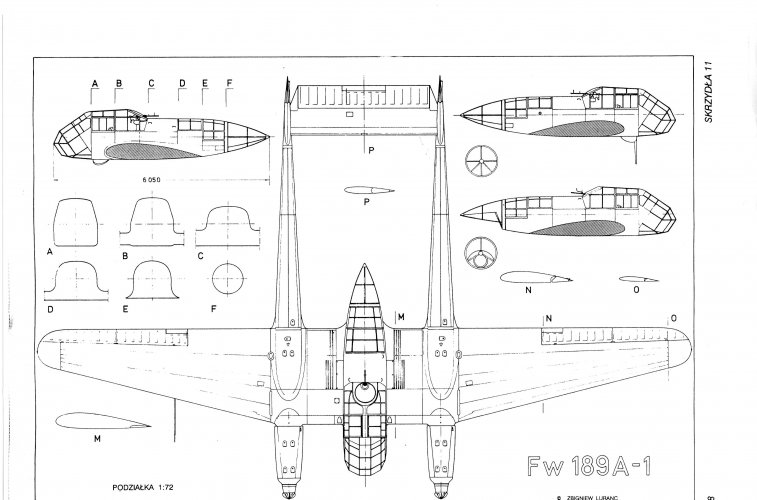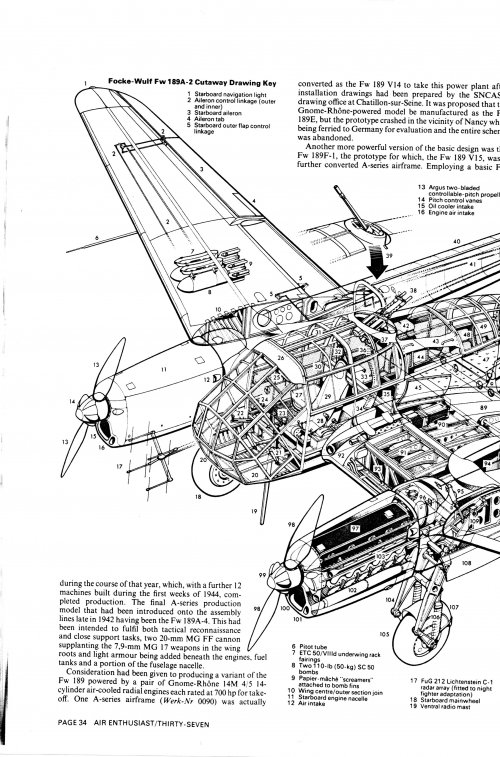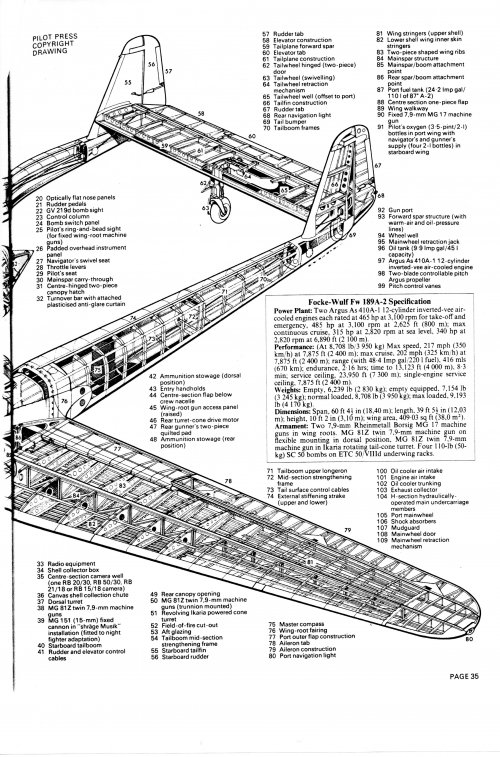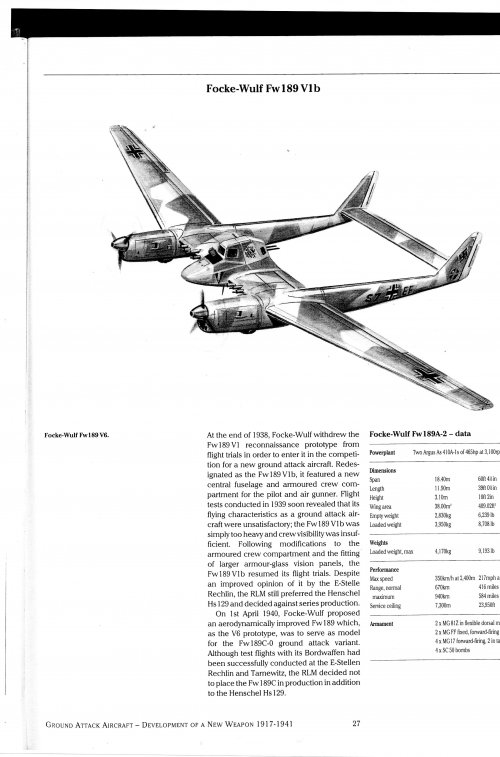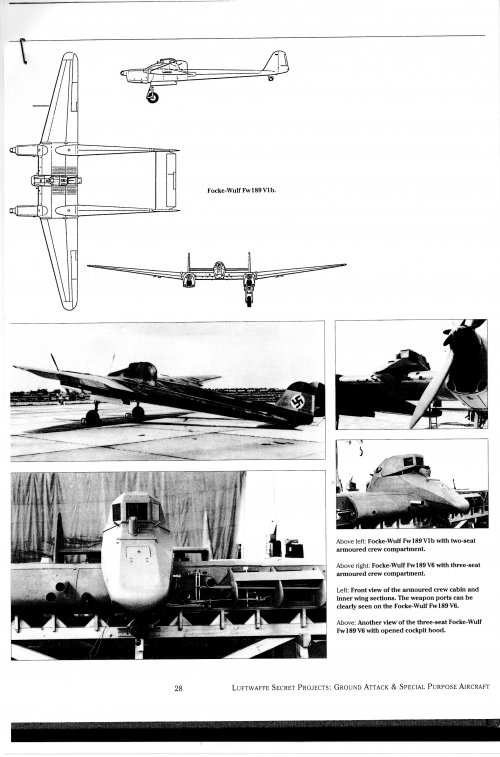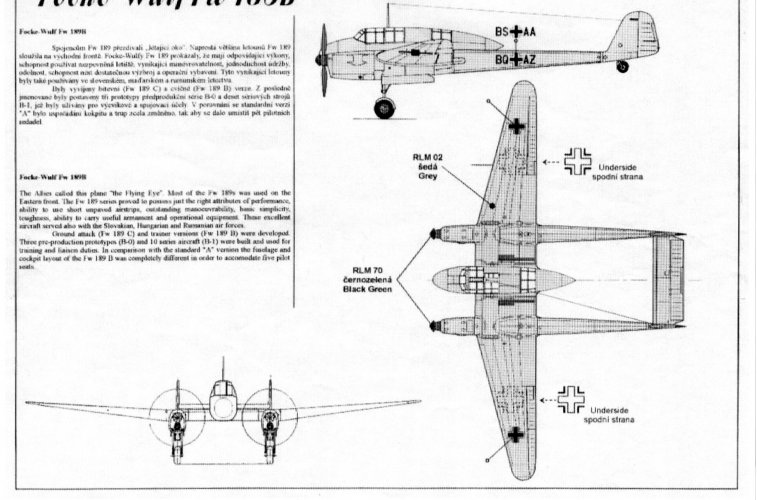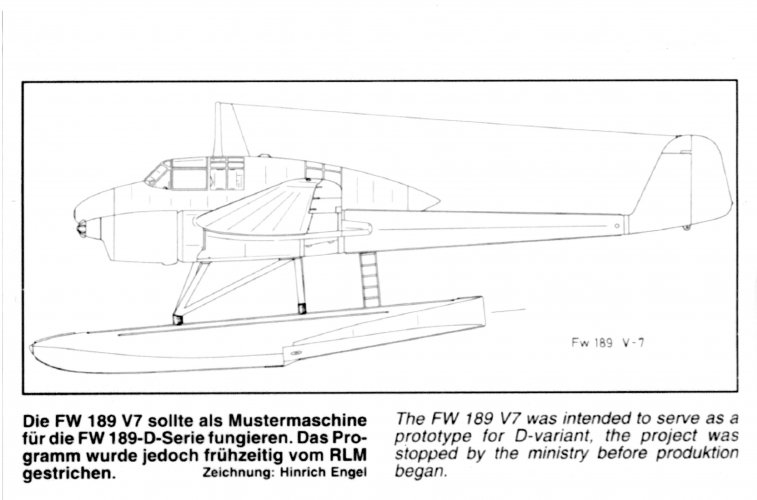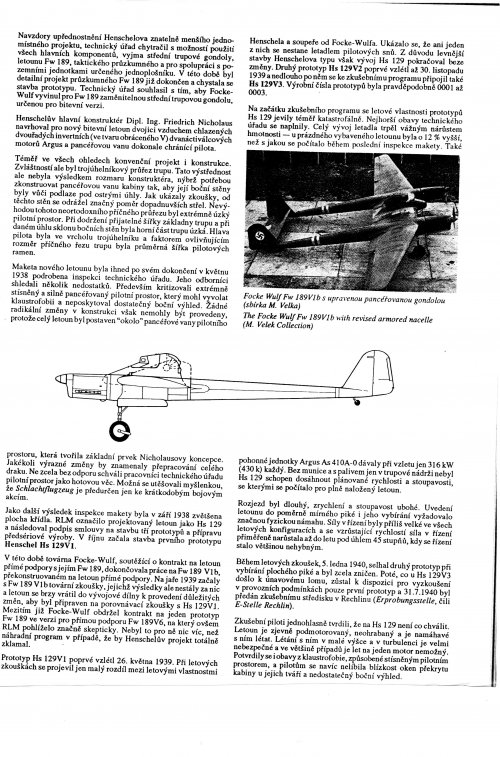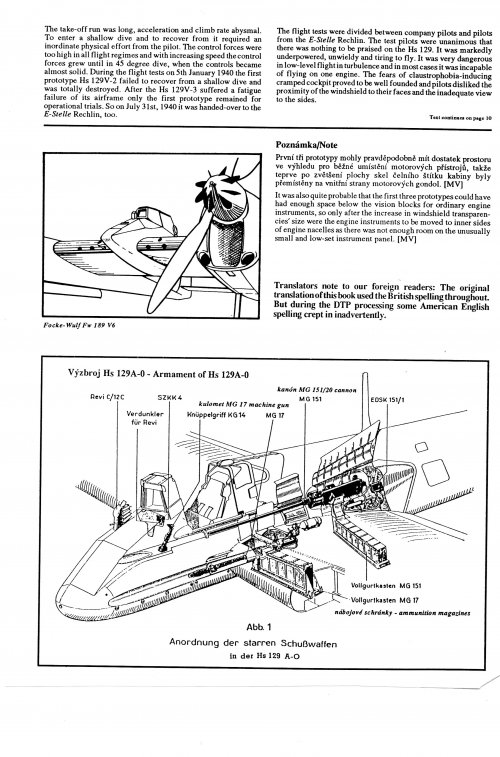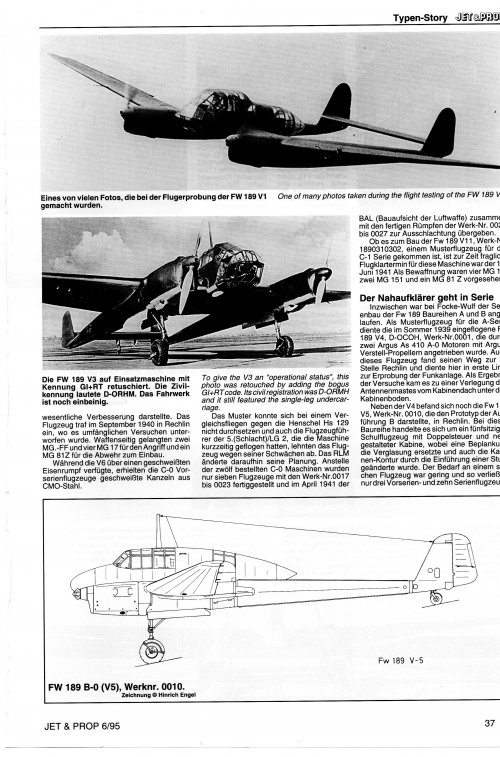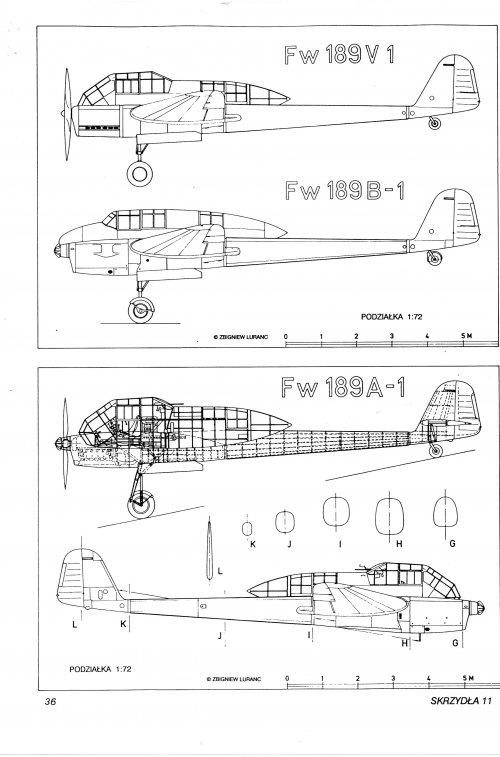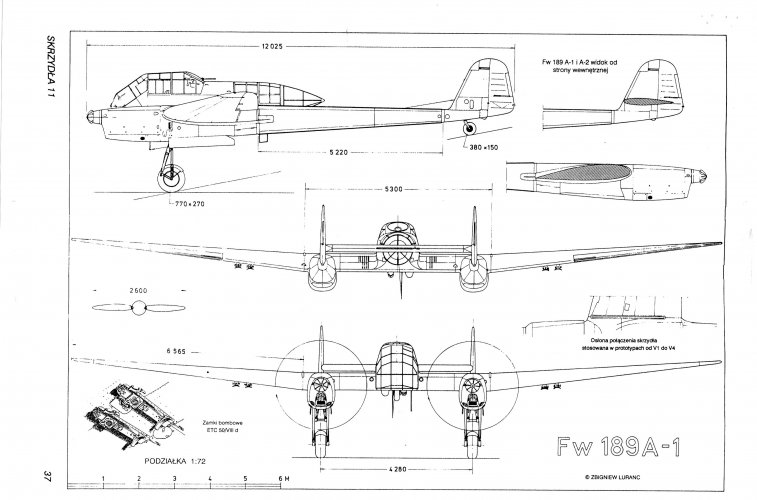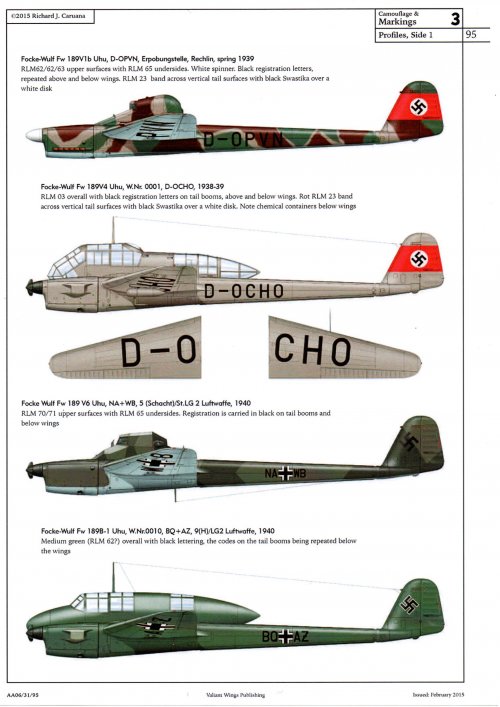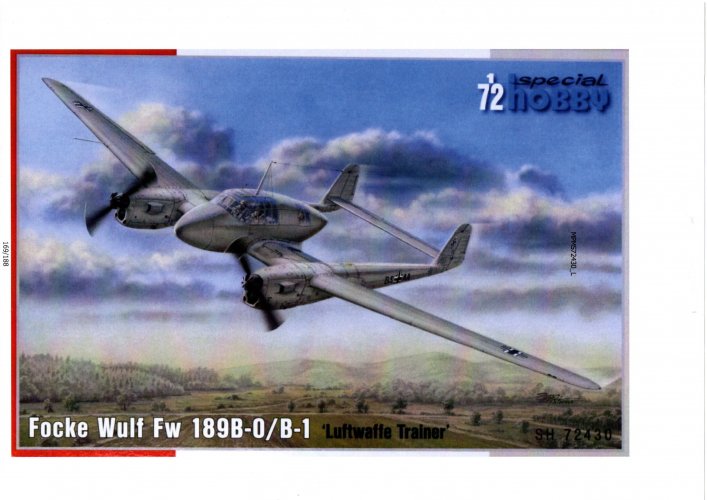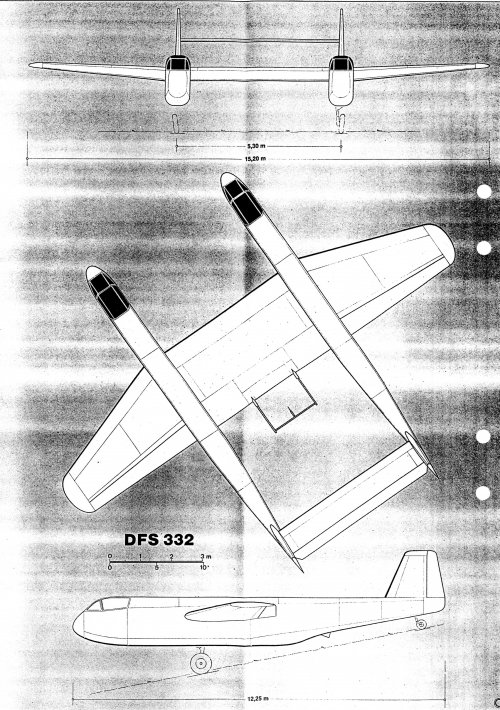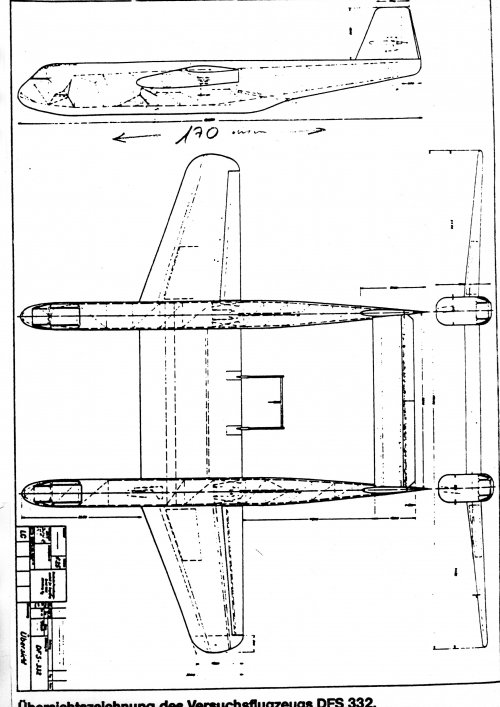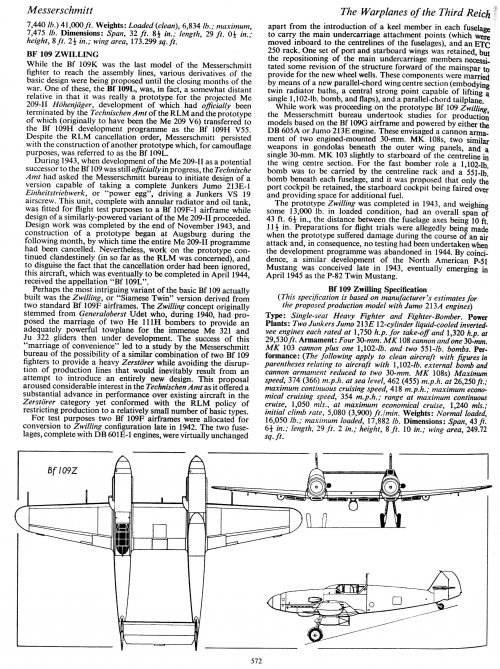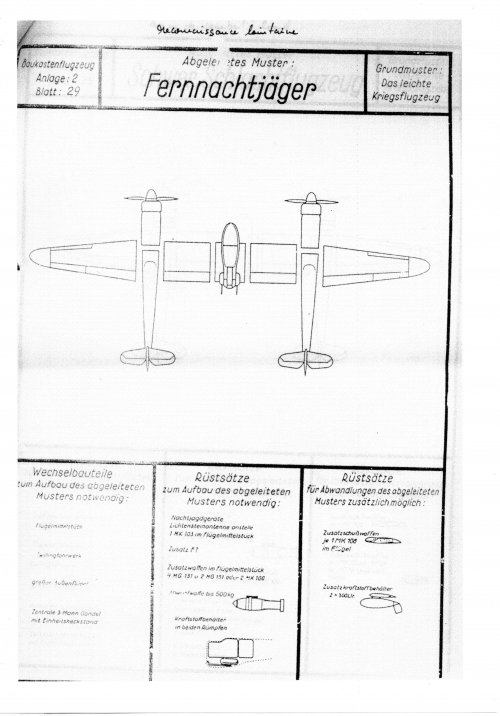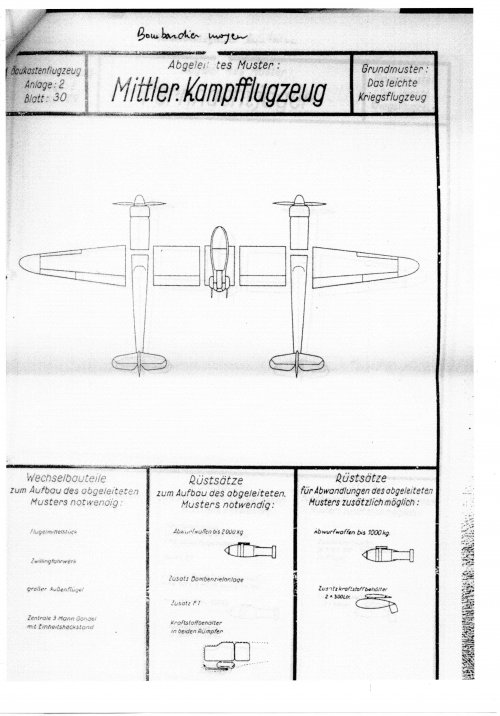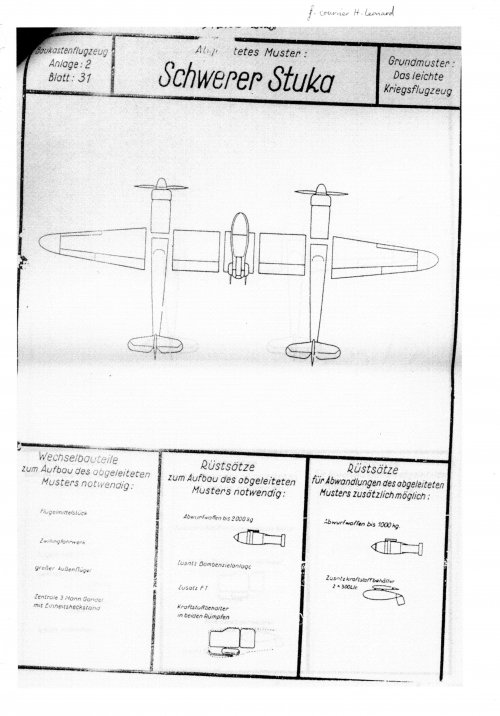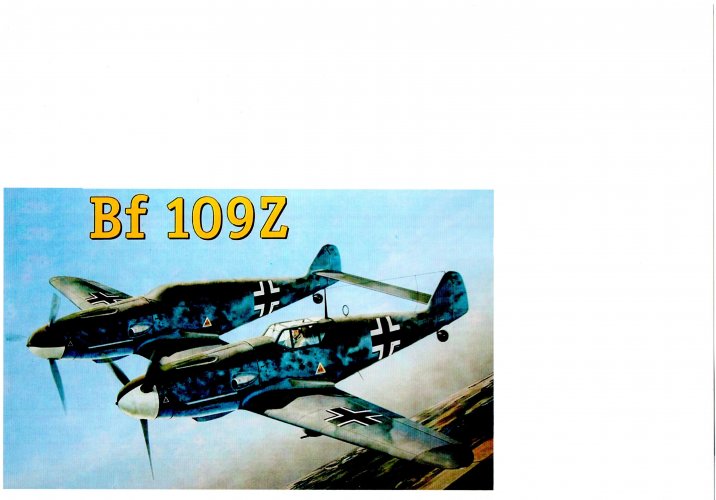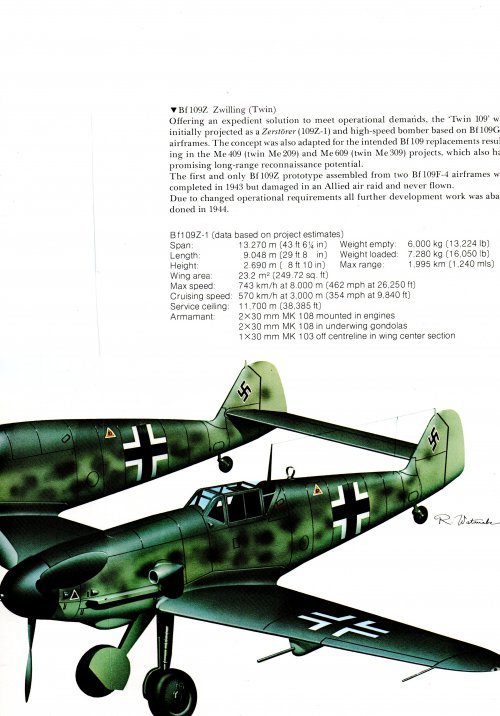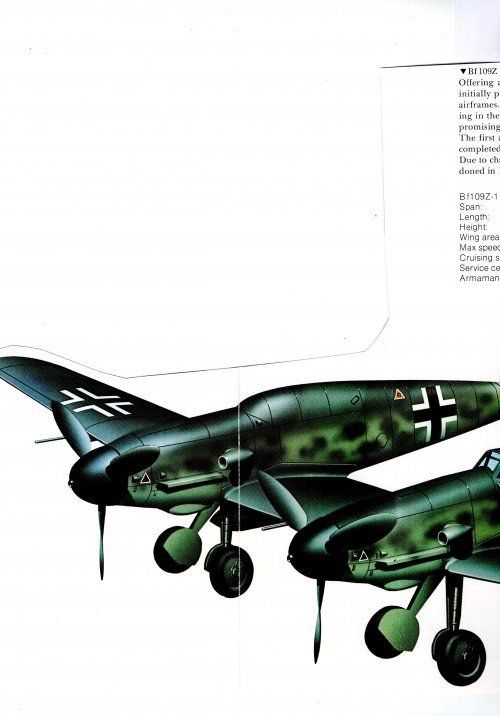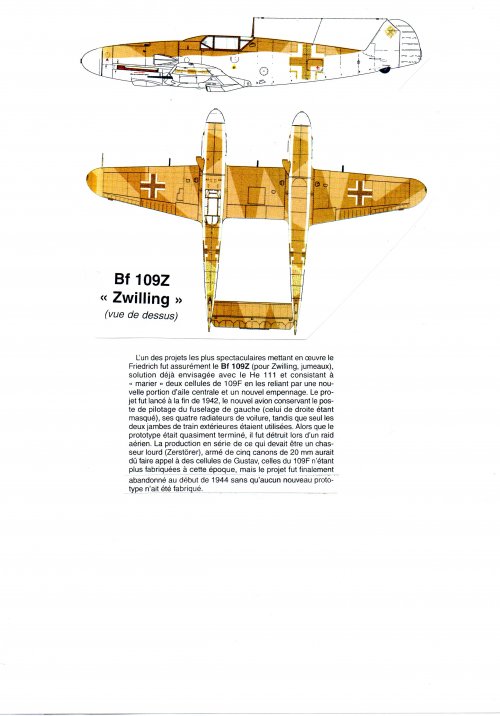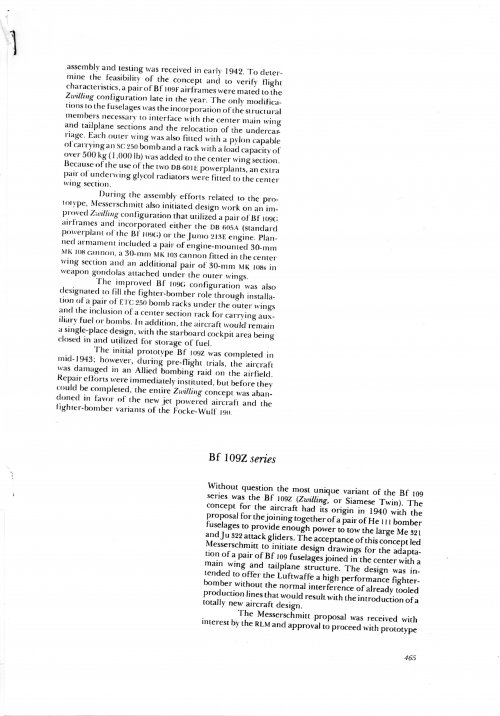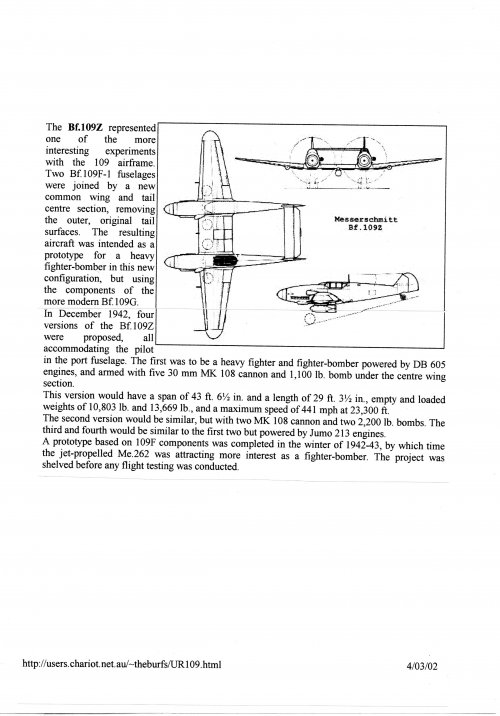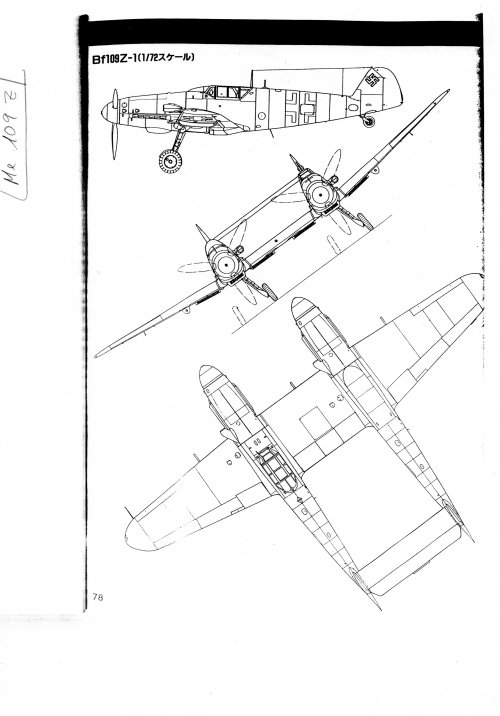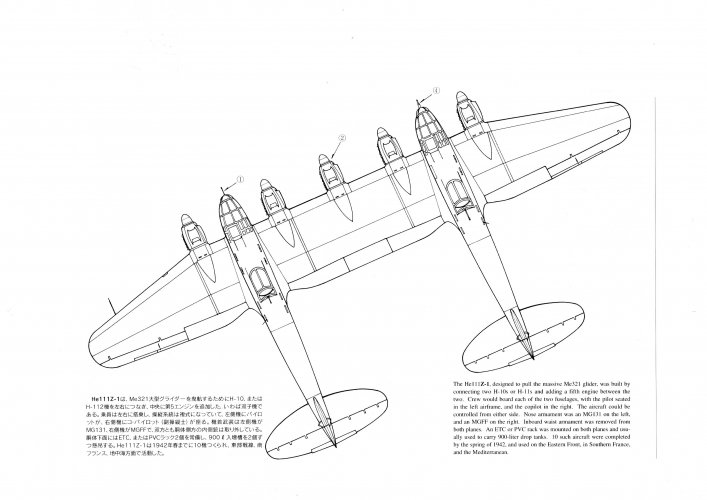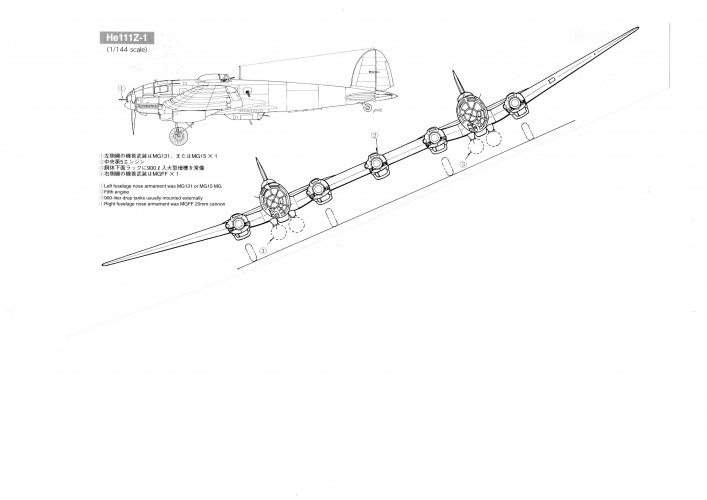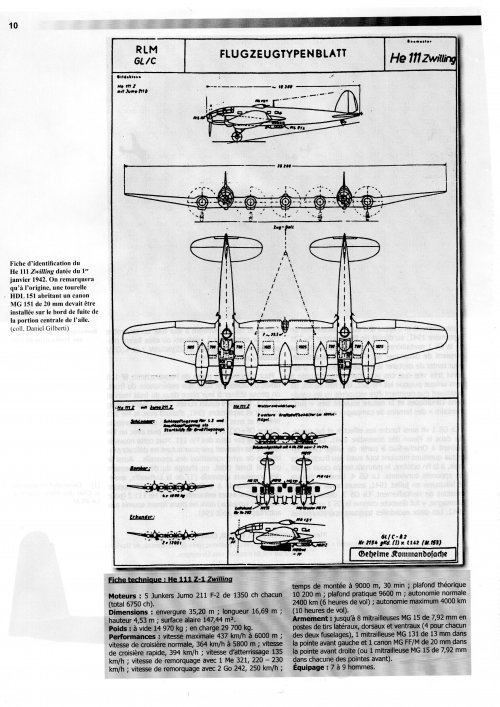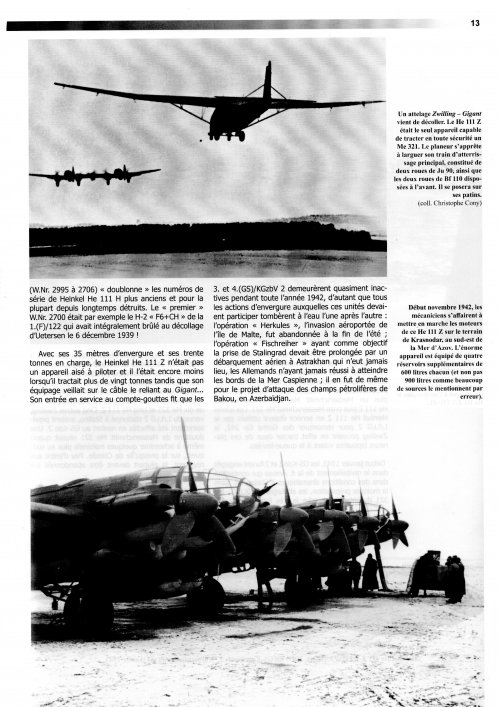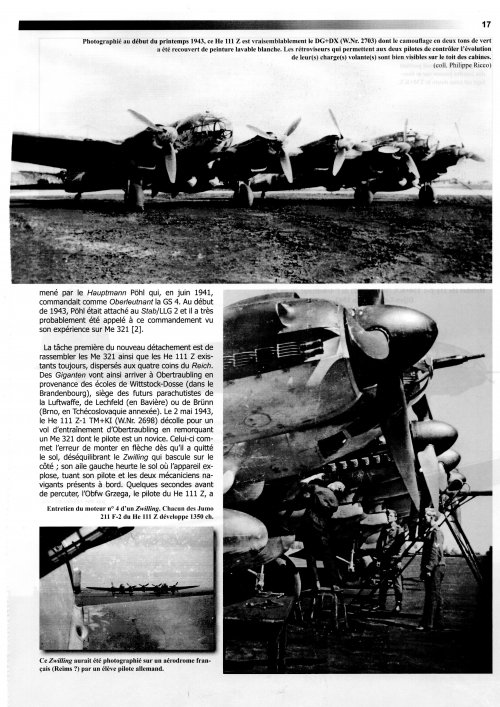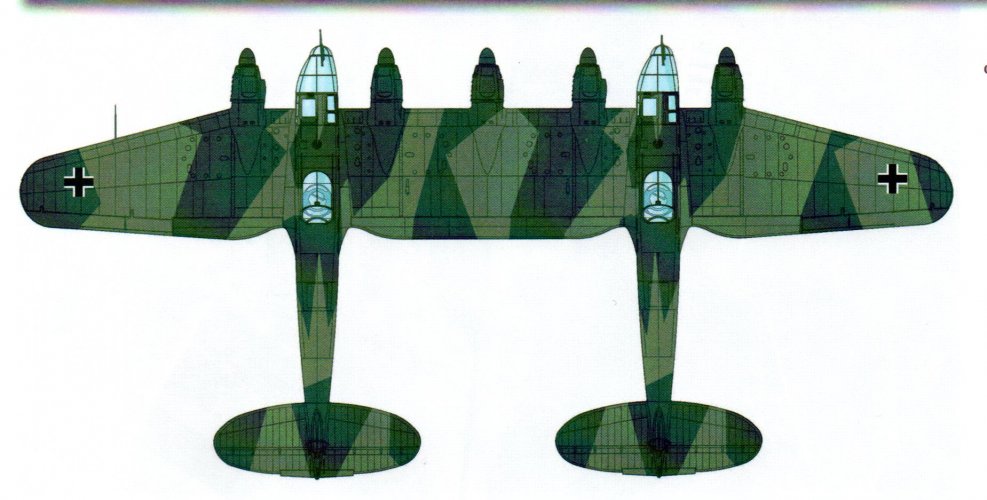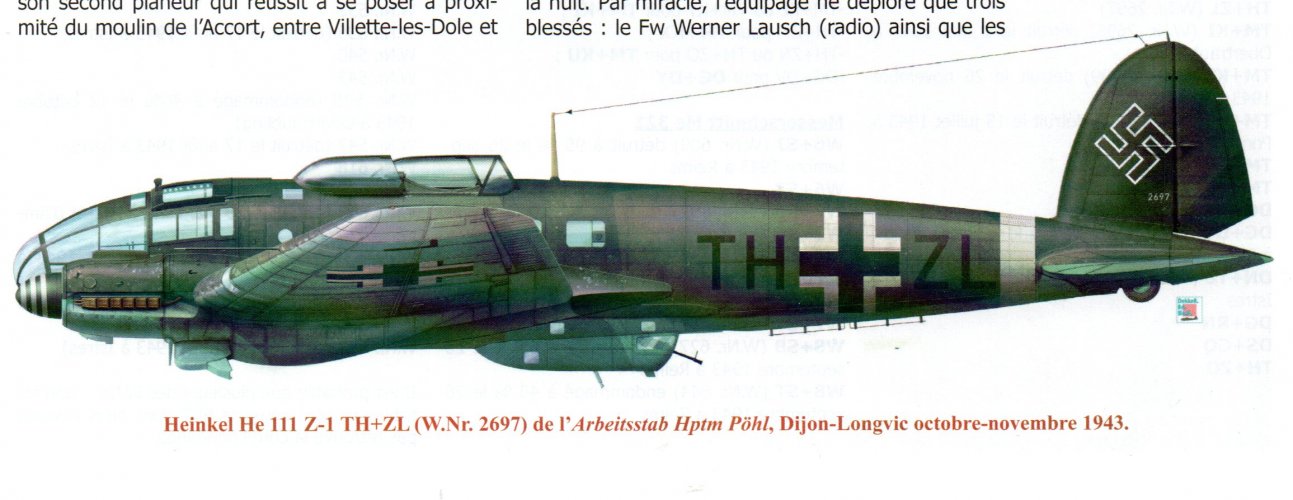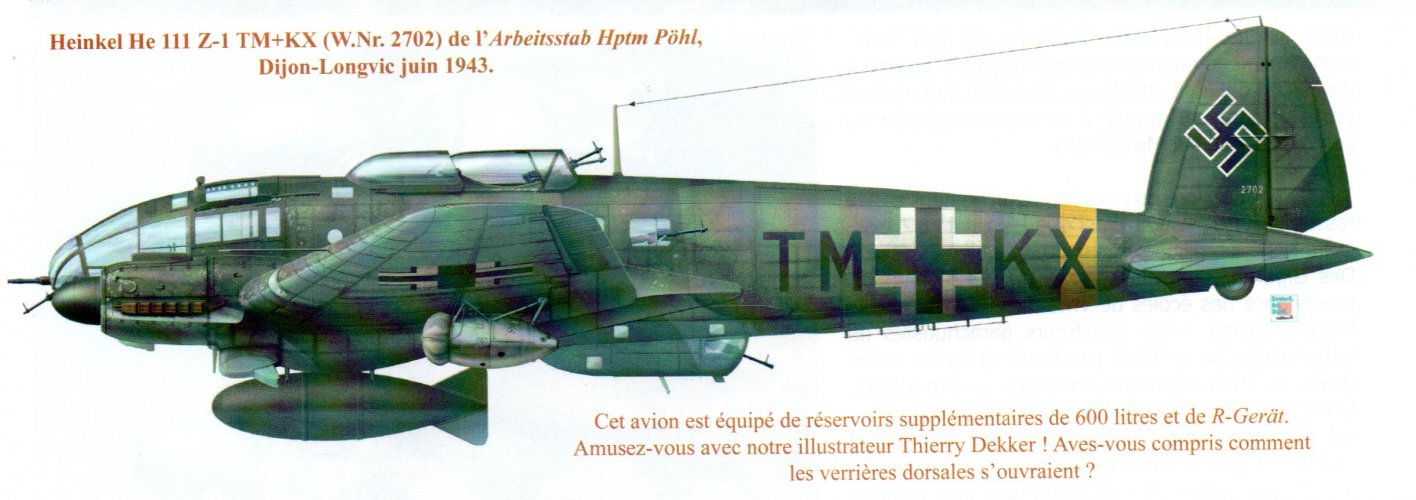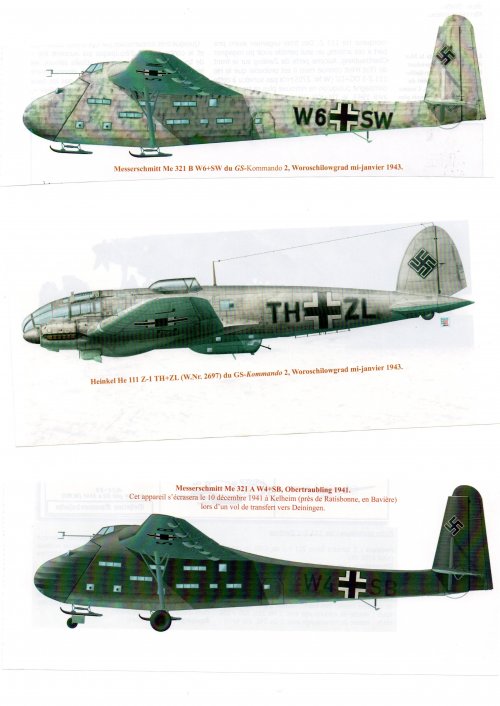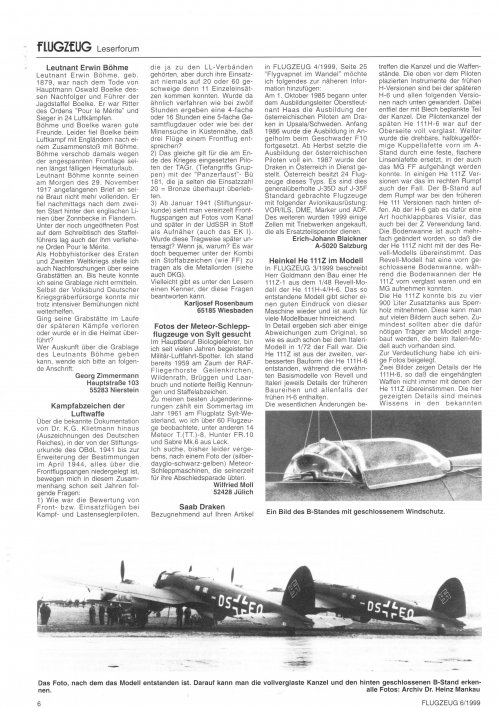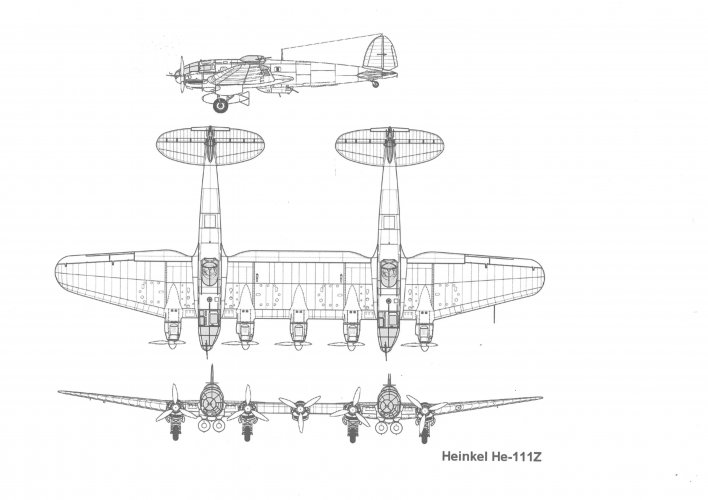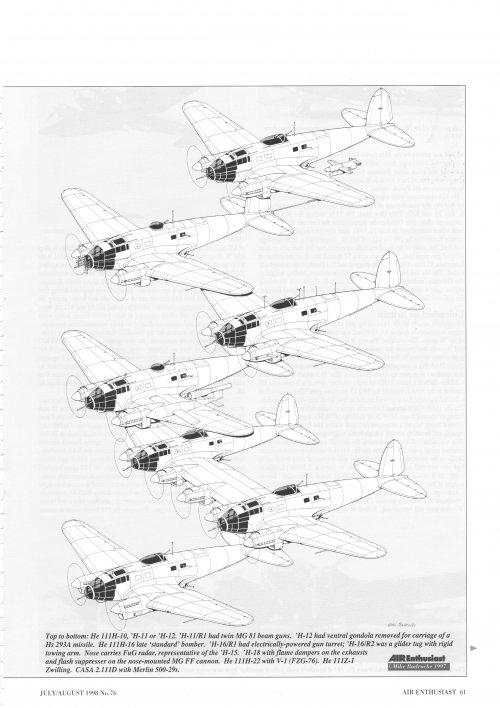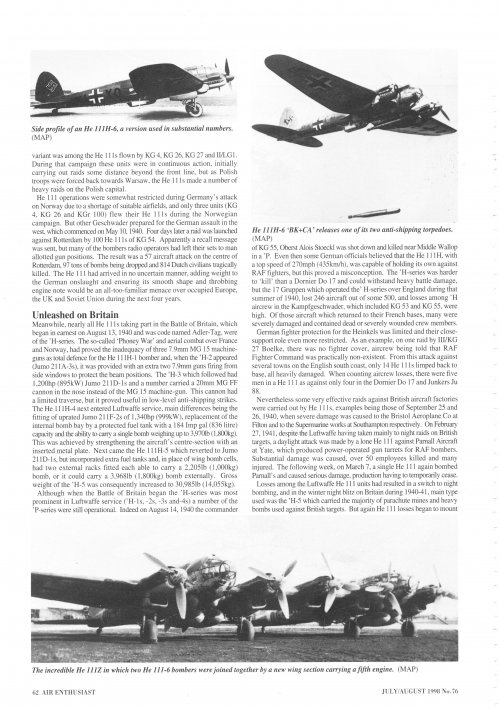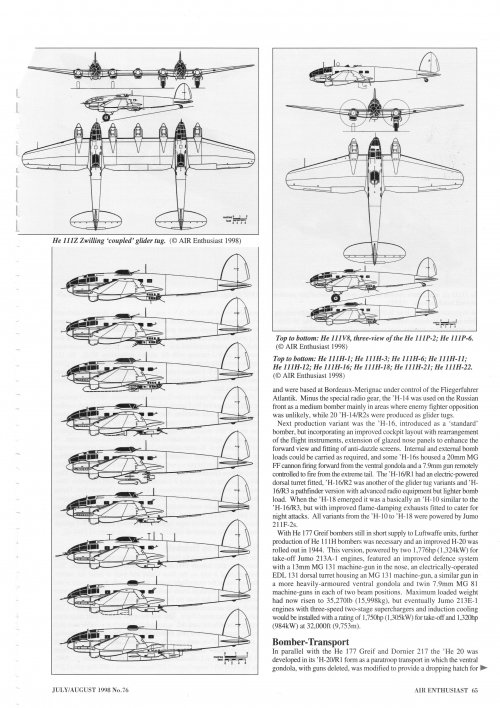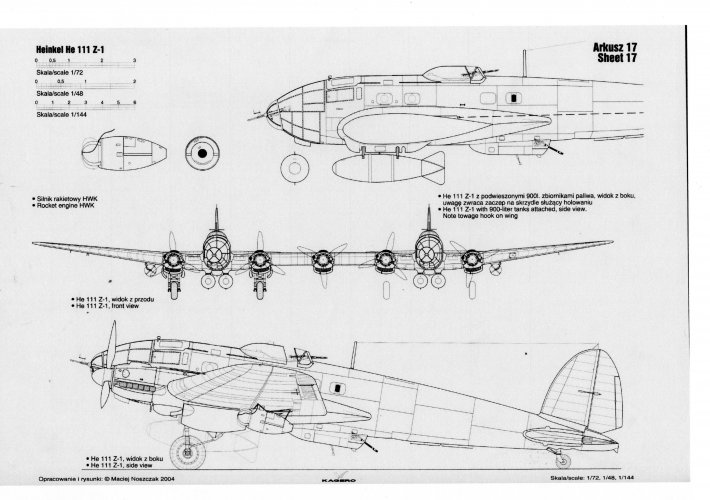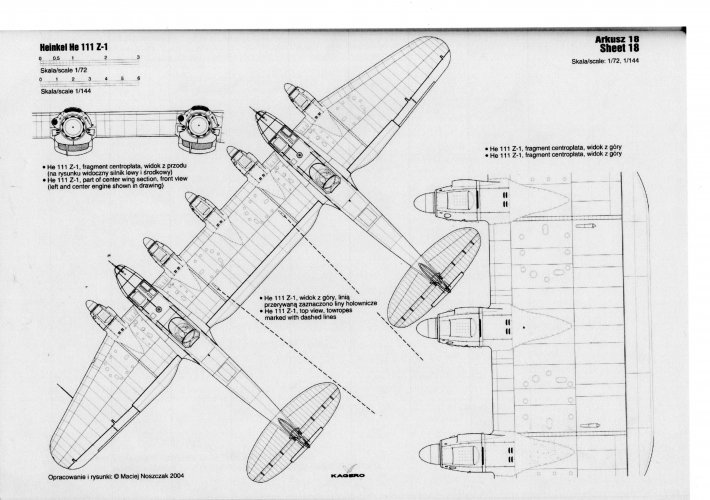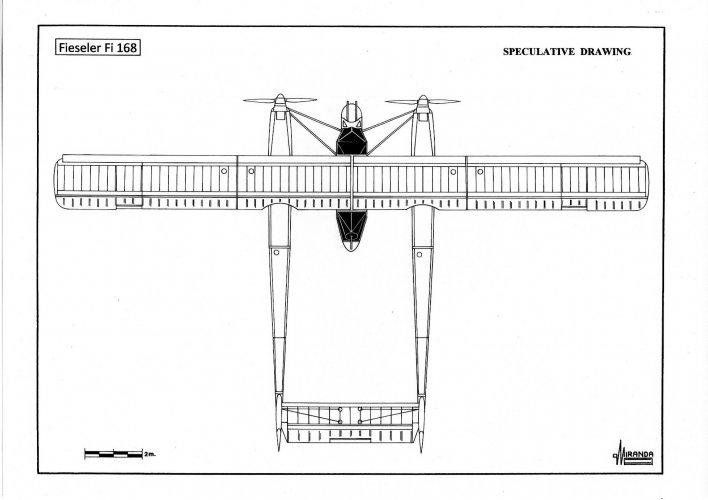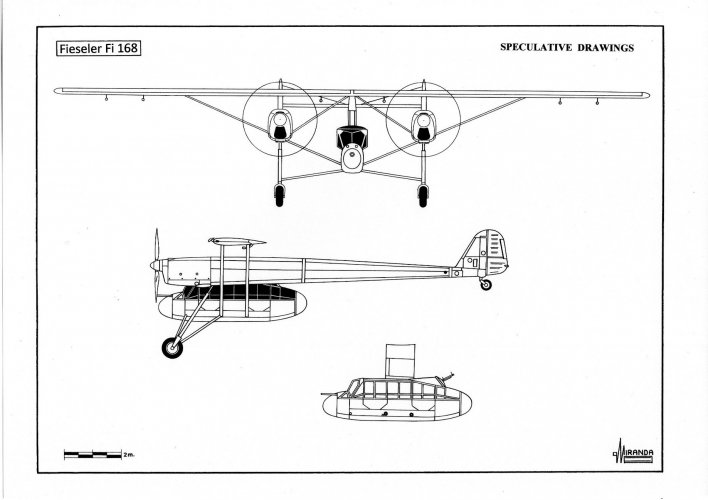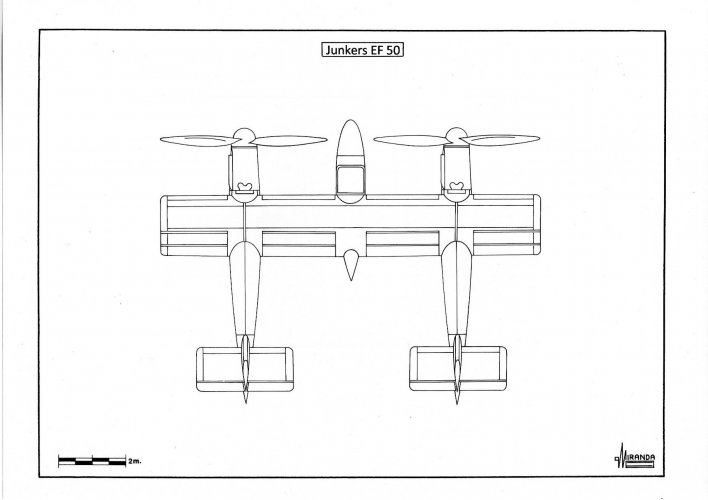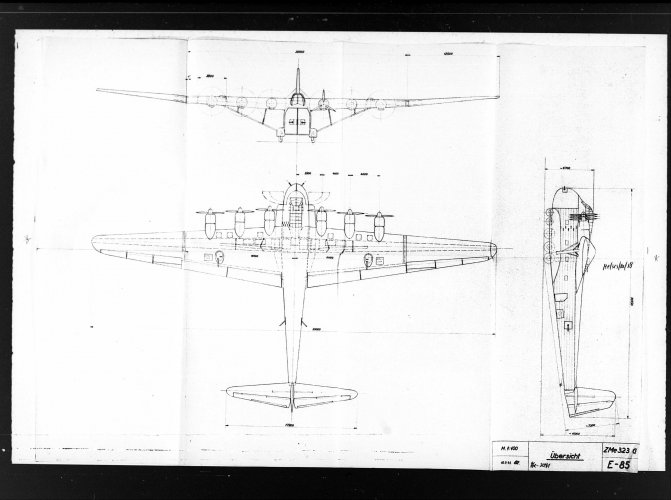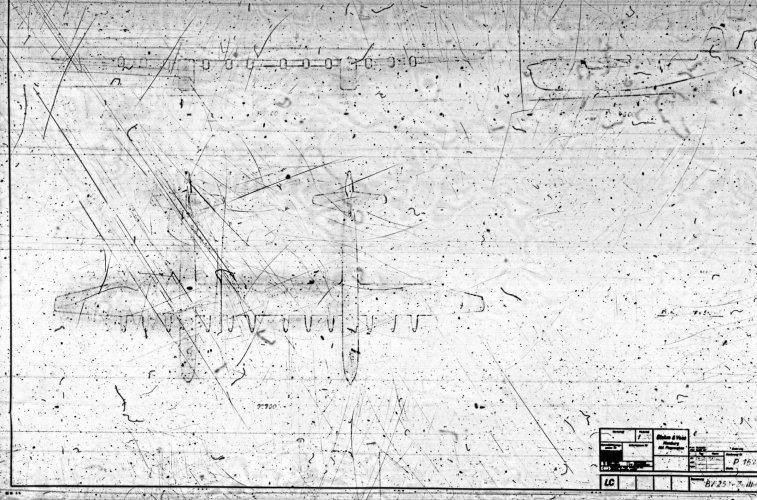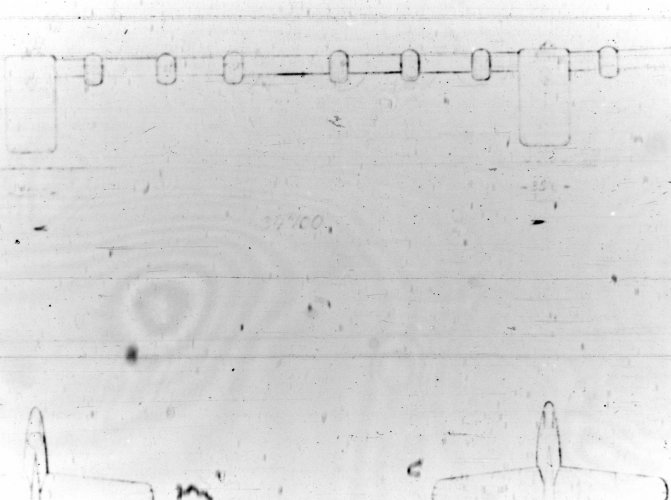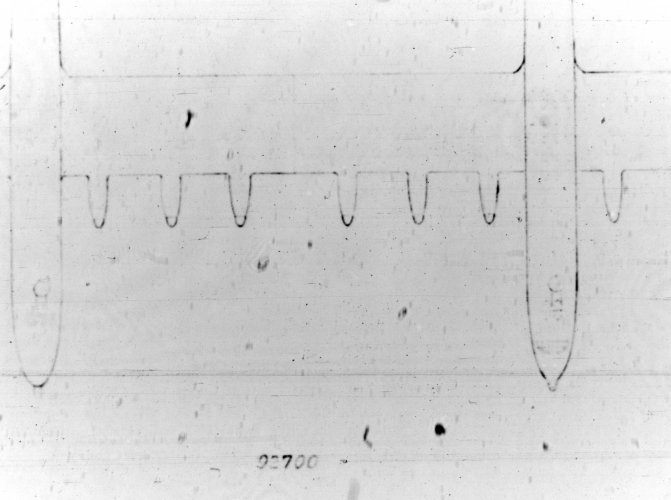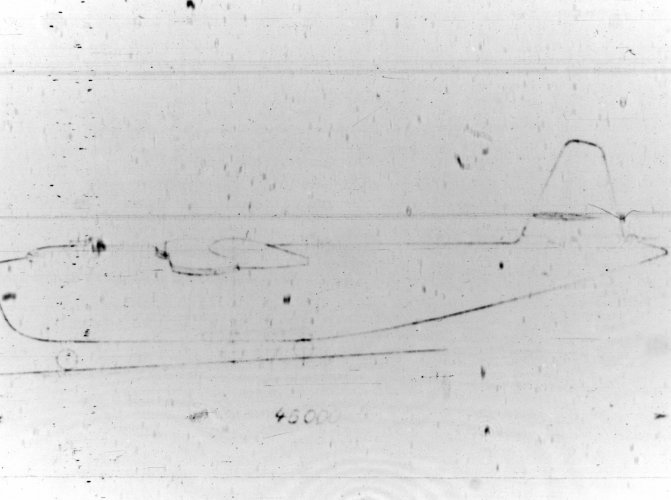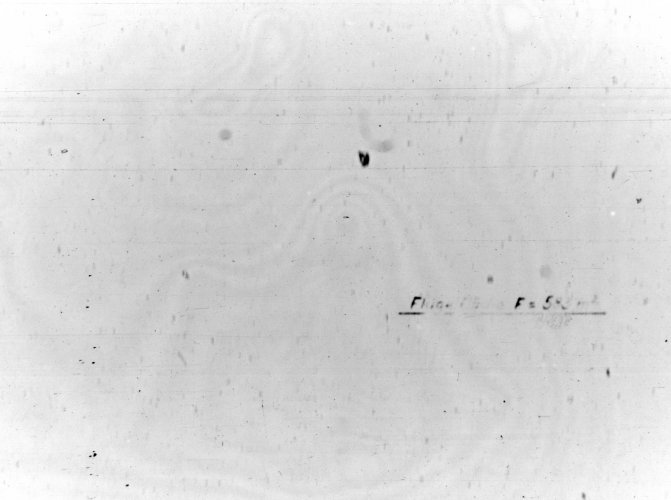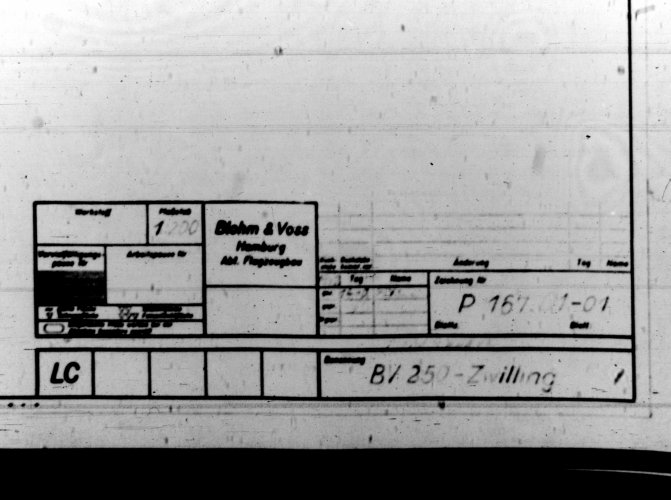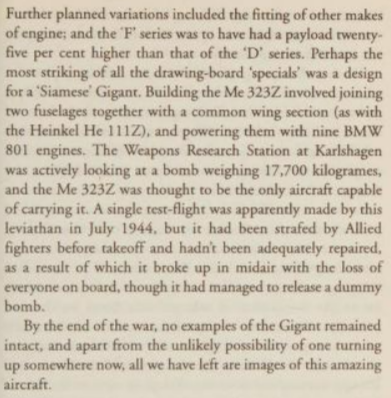Daimler Benz Schnellbomberträger
In the winter of 1942-43, it was formed a joint study group for the development of the one long-range composite bomber that would be capable of attacking both the Soviet industrial plants beyond the Urals and the cities and naval bases in the east coast of USA. The study group was integrated by Dipl. Ing. Fritz Nallinger and Ober Ing. Übelacker of the Daimler Benz firm and Dipl.-Ing. Kurt Tank of Focke Wulf.
The first design developed by the group in March 1944 was named ‘Projeckt A' number 01-891658 and consisted of a
Trägerflugzeug upper element and a
Schnellbomber lower element. The first was a giant transport aircraft powered by four HeS 021 turboprops, with 3,300 kp thrust each, mounted on pylons over the 60 m span wing. It was equipped with a huge fixed undercarriage with six 1880 x 680 wheels and enough ground clearance to carry a large load suspended under the fuselage. The
Tragerflugzeug crew was of just two men; it weighed 135 tons and had a range of 17,000km. Its length was of 42 m, its height of 14 m and its wing area was of 555 sq m.
The lower element was a bomber of 83 tons, powered by two BMW 18 turbojets with 3,450 kp thrust each, 42 degrees swept wing, with 26.16 m span, and butterfly tail, capable of flying at 1,000 kph with a crew of two men and 5,000 kg of bombs. Its length was of 33.6 m, its height of 4 m and its wing area of 166 sq m.
In May 1944, the RLM ordered Daimler Benz to partner with the firm Heinkel in the construction of the HeS 021 turboprop that had been chosen to propel a long-range reconnaissance version of the Arado Ar 234. Problems with the starter motor and with the design of the reduction gearing for the airscrews delayed the project and the RLM choose to support the construction of the BMW 109-028 turboprop by mid-1944.
The cancellation of the HeS 021 also marked the end of the
Projeckt A, but on February 7, 1945, the joint study group presented
Projekt B number 0310256-03 to the RLM, a shortened version of
Trägerflugzeug with a take-off weight of 122 tons and 73,500 kg payload, propelled by six DB 603N piston engines with 2,750 hp each.
Projekt B was designed with a wingspan of 54 m, a length of 35 m, a height of 11.2 m, and a wing area of 500 sq m.
The
Schnellbomber also evolved to suit the performances of the mother plane by reducing its size to a wingspan of 22 m, a length of 30 m, a height of 7.3 m. and a wing area of 140 sq m. On December 11, 1944, it was presented to the RLM in two versions -
Schnellbomber and
Aufklärer - under the name of
Projekt C number 0310256-05. The bombing version retained the capacity to carry up to 5,000 kg of bombs at 1,000 kph, although its weight was reduced to 70 tons; their engines were replaced by a single DB 109-016 turbojet of 13,000 kp static thrust, adopting the undercarriage of a Ju 287.
To improve lateral stability the
Schnellbomber was equipped with twin vertical tailfins that in the reconnaissance version were replaced by others of ‘butterfly’ type.
With 52 tons of J-2 fuel,
Aufklärer could fly 9,300 km with a crew of two men and two photo-reconnaissance cameras Rb 75/30. To increase the range it was considered to use an axial-flow turbofan DB 109-007, specifically designed for a low specific fuel consumption of 1,720 kilograms per hour.
To fight against the Allies convoys in the Atlantic Ocean it was expected that the
Trägerflugzeug could carry five Henschel Hs 295 antiship missiles; but in late 1944 the electronic jamming equipment of the allies could void the Germans radio guidance systems. On January 10, 1945, the OKL received a proposal to replace the missiles by a new type of
S.O. Flugzeug (suicide airplane) called
Projekt E number 0310256-04. In this project, each plane carried a hollow charge warhead SHL 2500 of 1.4 m diameter and 1,800 kg of K1 fuel for its turbojet engine HeS 011. It had 8.5 m of wingspan, 9.2 m. of length and 3.2 m of height. Its estimated range was of 2,000 km and it maximum speed of 1,000 kph.
There also existed a project of a more powerful version, first described in January 1946 as
Projekt F in the R.A.F. Report No. 2383 A.I.2 (G) and as
Projekt D or
Lenkbomber by later German sources. It was a suicide bomber of 10.26 tons, powered by a DB 109-007 dorsal turbojet of 1,275 kp static thrust, with 4,000 kg of J2 fuel and provided with a hollow charge warhead SHL 3500
Holladungssprengbombe activated by a nose probe of 1.9 m, extendable to 2.6 m before impact. It could fly at Mach 0.82, reaching transonic speeds in terminal dive.
Lenkbomber had 9 m of wingspan, 13 m of length, 3.10 m of height and 20 sq m of wing surface
Research on the DB 109-007 was paralyzed by the RLM in May 1944, suggesting an earlier date of design for the
Lenkbomber.

